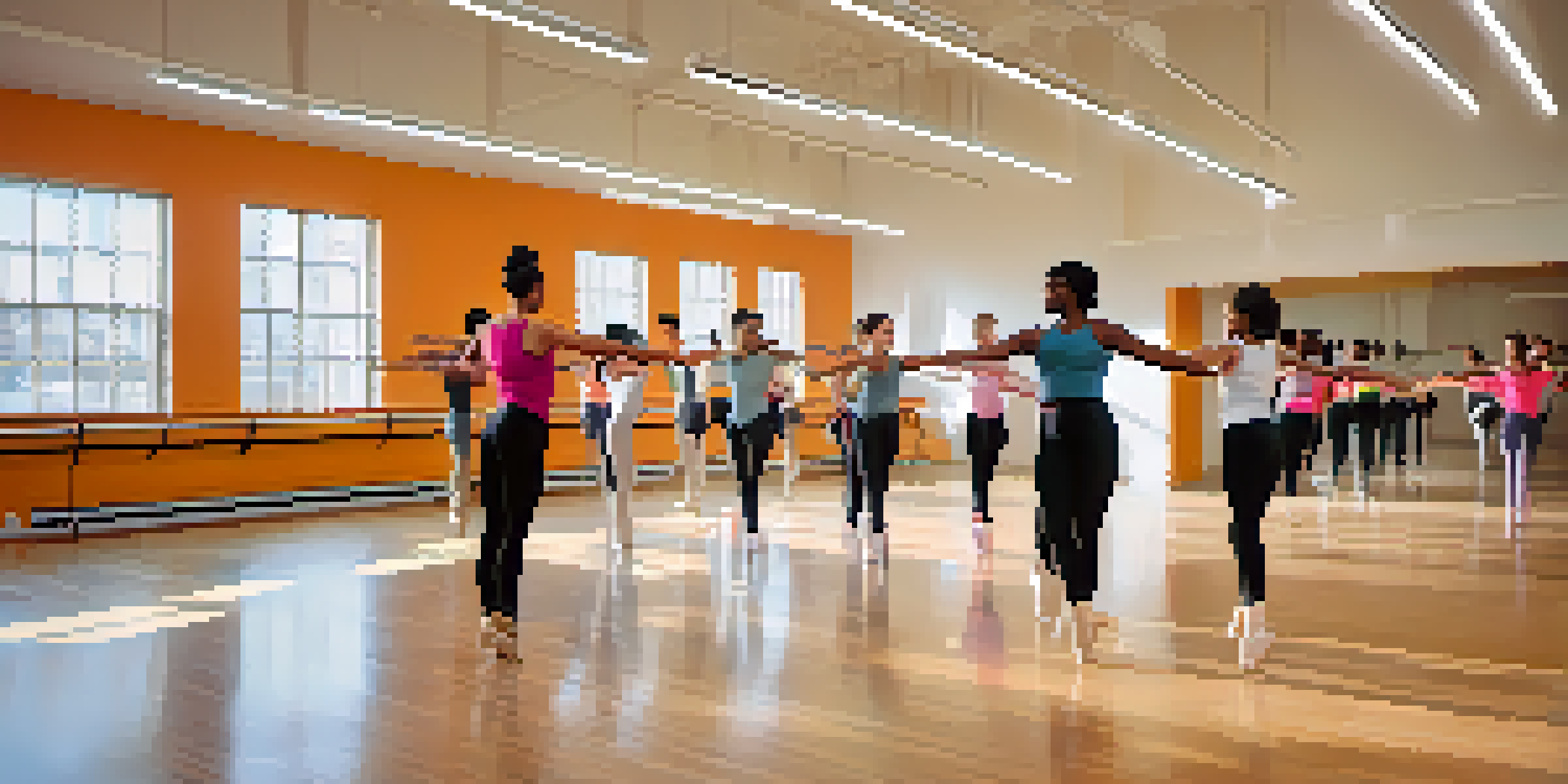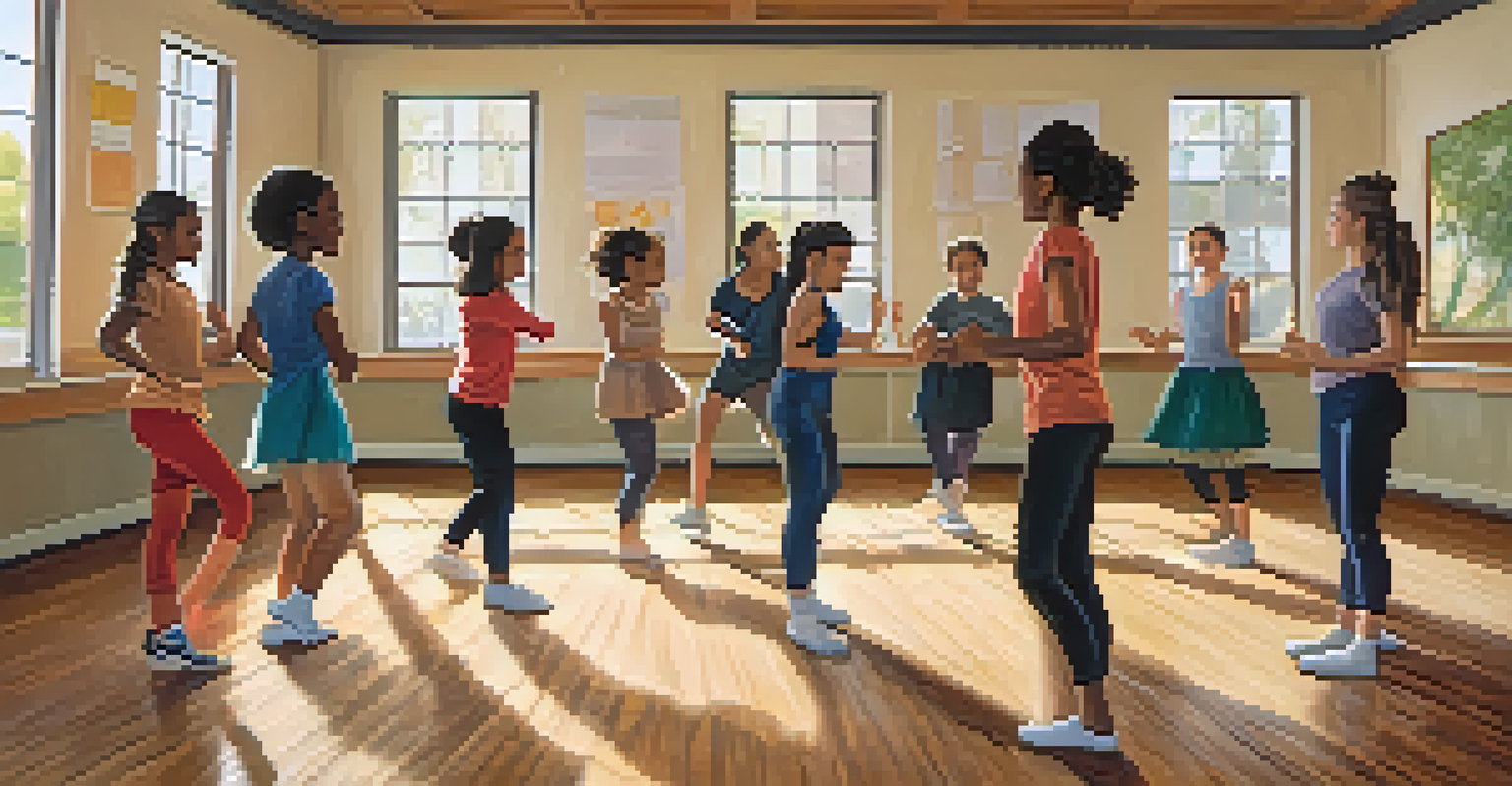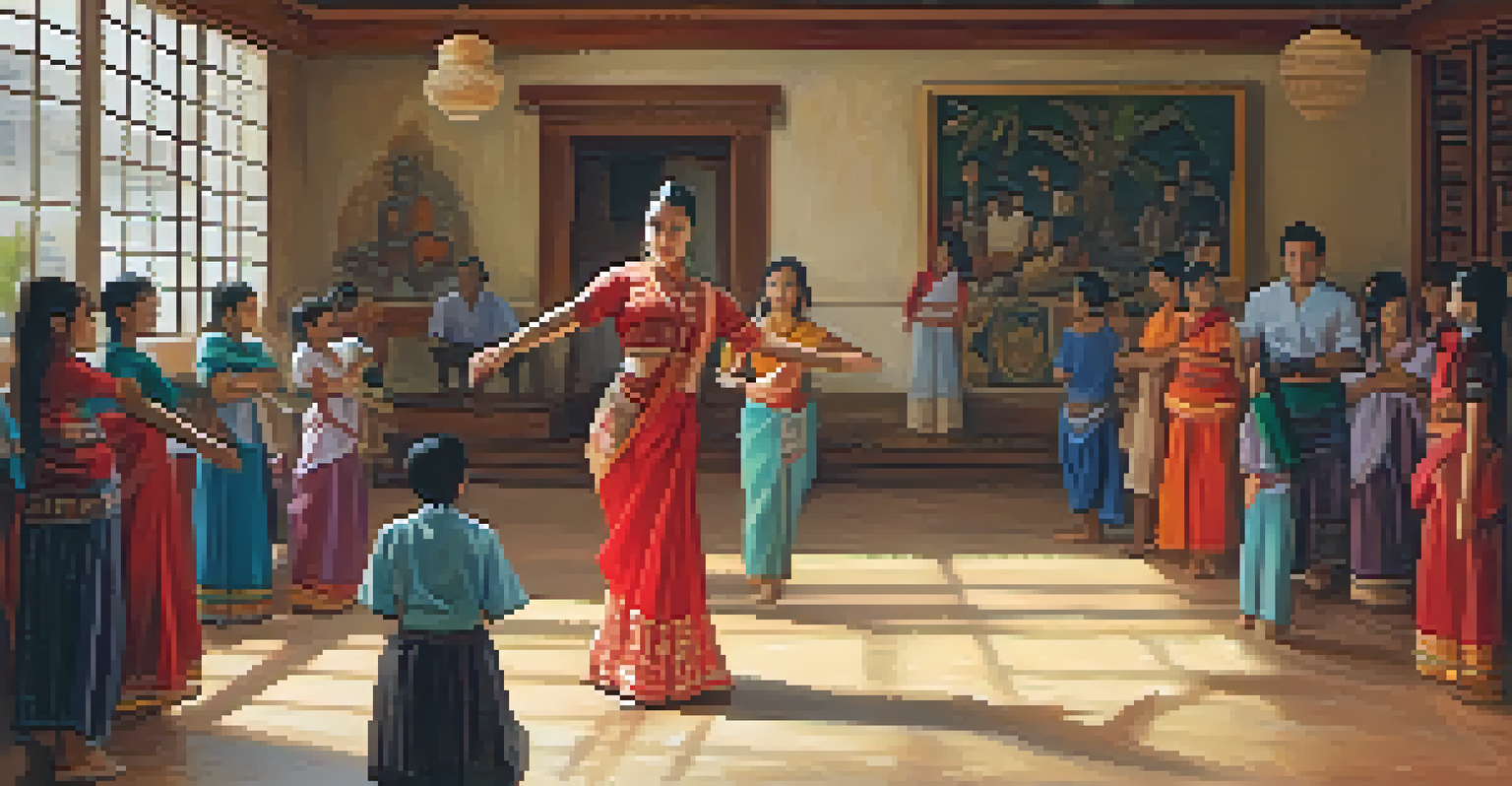Creating Inclusive Dance Spaces: A Guide for Educators

Understanding the Importance of Inclusive Dance Education
Creating inclusive dance spaces is essential for fostering a sense of belonging among all students. When educators understand that inclusivity goes beyond just physical accessibility, they can better engage every dancer in the learning process. This approach not only enhances individual learning experiences but also enriches the overall classroom environment.
Diversity is being invited to the party; inclusion is being asked to dance.
Inclusive dance education allows students of all backgrounds, abilities, and identities to express themselves freely. It encourages creativity and collaboration, breaking down barriers that often exist within traditional dance settings. By prioritizing inclusivity, educators can help students build confidence and improve their social skills.
Moreover, inclusive practices promote empathy and respect among students, creating a supportive community. This environment encourages dancers to appreciate diversity and learn from each other's unique perspectives. Ultimately, a focus on inclusivity prepares students to thrive in a diverse world.
Assessing Your Dance Space for Accessibility
To create an inclusive dance space, start by assessing the physical environment for accessibility. Consider factors such as entrance ramps, flooring materials, and available space for movement. A welcoming atmosphere should accommodate students with varying physical abilities and sensory needs.

Think about the layout of your dance studio. Ensure that there is enough room for wheelchairs or mobility aids, and that all students can easily navigate the space. Additionally, consider how lighting and acoustics affect the sensory experience, as these elements play a vital role in making everyone feel comfortable and engaged.
Foster Inclusivity in Dance Education
Creating inclusive dance spaces enhances belonging and engagement among students of all backgrounds and abilities.
Regularly soliciting feedback from students can provide valuable insights into the accessibility of your space. Encourage open discussions about what works and what could be improved. As you make adjustments, remember that creating an inclusive environment is an ongoing process that requires continual reflection and adaptation.
Incorporating Diverse Dance Styles and Techniques
One way to foster inclusivity in dance education is by incorporating a variety of dance styles and techniques. This not only exposes students to different cultural expressions but also caters to diverse learning preferences. By celebrating a range of dance forms, educators can make the curriculum more relevant and engaging for all students.
Education is the most powerful weapon which you can use to change the world.
For instance, integrating styles such as hip-hop, ballet, and traditional folk dances can offer students a broader understanding of movement. This diversity invites students to connect with dance on a personal level, allowing them to explore and express their own cultural identities. It also encourages collaboration, as students can share their unique backgrounds and experiences.
Additionally, showcasing guest artists from diverse backgrounds can enhance the learning experience further. When students see role models who look like them or come from similar communities, it strengthens their sense of belonging. Ultimately, incorporating diverse dance styles enriches the educational experience and promotes inclusivity.
Adapting Teaching Methods for All Learners
Adapting teaching methods to meet the needs of all learners is crucial in creating inclusive dance spaces. Different students may have varying learning styles, abilities, and preferences, so flexibility in teaching can make a significant difference. By employing a range of instructional strategies, educators can ensure that everyone has the opportunity to succeed.
For example, using visual aids, verbal instructions, and hands-on demonstrations can cater to different learning styles. Additionally, breaking down complex movements into smaller, manageable steps helps students grasp concepts more easily. This approach allows for greater participation and fosters a sense of achievement among all dancers.
Adapt Teaching for Diverse Learners
Employing varied instructional strategies ensures that all students can participate and succeed in dance education.
It’s also important to encourage peer support and collaboration in the classroom. Group activities can help students learn from one another while building social connections. By fostering a cooperative environment, educators can empower all students to share their strengths and support each other in their learning journeys.
Building a Supportive Community Among Dancers
A supportive community is essential for fostering inclusivity in dance spaces. Educators can facilitate this by creating opportunities for students to connect and collaborate. Activities such as group projects and team-building exercises help establish relationships and a sense of belonging among dancers.
Encouraging open communication within the classroom is also vital. Establishing guidelines for respectful dialogue allows students to share their thoughts and experiences freely. When students feel heard and valued, they are more likely to engage fully in the learning process.
Moreover, celebrating achievements—both big and small—can further strengthen the community. Recognizing individual progress fosters a culture of encouragement and support, where everyone feels motivated to contribute. In this way, building a strong community enhances the overall dance experience for all students.
Creating Opportunities for Student Leadership
Empowering students to take on leadership roles is a key aspect of creating inclusive dance spaces. When students are given the chance to lead, they develop confidence and a sense of ownership over their learning. This approach not only benefits the individual but also fosters a collaborative environment among peers.
For instance, educators can assign roles such as class helpers or choreographers to students who show interest. This allows them to share their unique perspectives and skills while encouraging others to participate. By recognizing and valuing student contributions, educators create a more inclusive atmosphere that celebrates diversity.
Build a Supportive Dance Community
Facilitating connections and open communication among students fosters a strong sense of community and collaboration.
Additionally, providing mentorship opportunities can further enhance student leadership. Pairing experienced dancers with newcomers creates a supportive network where students can learn from one another. This not only helps build skills but also strengthens community ties within the dance space.
Evaluating and Reflecting on Inclusivity Practices
Evaluating and reflecting on inclusivity practices is essential for continuous improvement in dance education. Regular assessments can help educators identify areas of strength and opportunities for growth. By taking the time to reflect on their practices, educators can ensure they are meeting the needs of all students.
One effective method for evaluation is gathering feedback from students and their families. Surveys, discussions, or informal check-ins can provide valuable insights into the experiences of diverse learners in the classroom. This feedback can guide educators in making informed adjustments to their teaching strategies and classroom environment.

Moreover, engaging in professional development around inclusivity can enhance educators' skills and knowledge. Workshops, conferences, and collaboration with other educators can provide fresh perspectives and resources. By committing to ongoing learning, educators can continue to foster inclusive dance spaces that benefit all students.